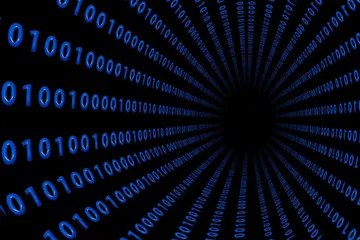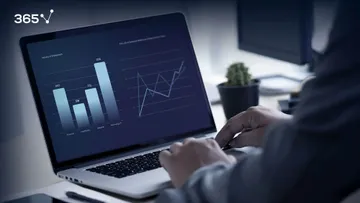
In today’s business world, terms like data connectivity, API, software, data, servers, and clients are used so often that you might think everybody knows their definitions by heart.
But is that really the case? And does everybody need to be familiar with these concepts?
If you are a software developer, then – yes, you most definitely do.
But if you’re an aspiring data science professional, having a general idea about the big picture will be sufficient for your work as a data analyst, business intelligence analyst, or an entry level data scientist.
So, in this article, we’ll introduce you to data connectivity and will clarify the key terms associated with it. You’ll learn about data, servers, clients, APIs, and software applications. Not only that, but we will discover more terms that will actually complete the data connectivity picture. I am talking about interfaces, endpoints, end users, and data assets.
But first, let’s go through a few fundamental definitions that will make things clearer.
What Is Data?
”Data” means information stored in the form of symbols – 1s and 0s, other digits, letters, special characters, etc. Thus, we can collect, measure, analyse, and process it further. For a more detailed explanation, check out our Introduction to Data and Data Science course.
Where can you find data?
Well, we are not talking about physical books with thousands of written pages or the enormous accounting ledgers from the 60s. Today, we practically store data in databases.
What Are Databases?
Databases represent an electronic collection of data, or a structure filled with information if you prefer, organized in a way that makes it easy to access, manage, and update.
And where are databases stored?
In database servers.
As a matter of fact, ‘server’ may be a misleading term for a newcomer since its definition can have multiple meanings depending on the scenario. So,
What Is a Server?
Theoretically speaking, a server is a combination of hardware and software responsible for storing, managing and processing large amounts of data. The most common types are the web servers, database servers, and FTP servers (Free Transfer Protocol). These facilitate the transfer of web pages, database queries, and files, respectively. All are different servers.
For example, in the client-server model, servers exist to respond to the requests made by a client. This model works in the following way: a client requests a service from a server to have access to some data, for instance. Here, the server is a piece of software that will provide this service, or this specific amount of data, to the client.
Say you are about to request, or pull, information from a web server through a browser, the latter being the client in this example. You can transmit your request to the server and, in return, obtain a response, also called a reply. Moreover, when we are talking about web servers and browsers, you will obviously need an internet connection.
Alternatively, local servers exist as well.
Imagine the headquarters of a large company, employing thousands of people. Of course, a lot of information is stored on its servers. And to access the information you need, you would have to use a cabled connection.
However, the data won’t be stored on an average desktop computer, as its capacity won’t be sufficient to handle the processing of the vast amount of information requested by the employees. That’s why specialized big machines, that have much more powerful hardware designed for storing huge amounts of data, are being called servers, too.
I know it’s a lot to take in, but don’t let the many definitions of the word “server” confuse you. In a way, a server is always a combination of hardware and software, and it is related to storing, managing, and processing data.
So, now that you know what data, servers, clients, requests, and responses mean, we can finally move on to exploring data connectivity.
What Is Data Connectivity?
Data connectivity regards the ability to connect clients and servers, securing the swift and voluminous transfer of information between them.
Actually, developing and maintaining data connectivity is one of the most important things of all and it is not a new subject. Today, servers send unprecedented amounts of data to clients and vice-versa. And if it wasn’t for data connectivity, this wouldn’t have been possible.
Ok, but how does it happen? How can one connect information from multiple servers simultaneously? How is this data delivered to the clients? In other words,
How Does Data Connectivity Work?
The simple answer is: by using APIs.
What Does API Mean in the Context of Data Connectivity?
Application programming interfaces, a.k.a. APIs, are the software tool that makes this entire beautiful picture a reality. Technically, an API is a contract allowing software to share data with each other. Otherwise, in simple words, it lets devices and software applications communicate in real time.
Let me break this down for you.
First of all, API is a type of an interface, so the terms application and programming act as adjectives here. So, let’s first figure out what an interface is about, and then we will make clear what the A and the P stand for in an API.
What is an Interface?
Think of a device, for instance, a cooker or a TV set. Obviously, by using inputs, a device is capable of executing certain operations to produce outputs. The cooker uses electricity (which is an input) to heat up its oven (the output), while the TV set uses electricity (an input) for displaying a film (the output). This means devices are capable of executing specific functions.
But how do devices relate to the outer world?
Through interfaces, or even more specifically – through the endpoints of its interfaces.
In our kitchen example, the cooker’s plug can be considered an endpoint of the cooker’s interface, while the electricity socket – an endpoint of the power supply. By connecting these two, electricity can flow from the power supply to the cooker, which can then provide its function – to heat up the oven. Hence, the connectivity between the power supply and the cooker is realized by connecting their respective endpoints.
The situation in the digital world is analogous. As I already said, to execute their inherent functions, software apps, in their capacity of clients, need access to specific types of data contained in some servers, and they are able to obtain such access through the relevant endpoints.
Now let me clarify a bit further.
Who is using these apps? – People and other software. They are the end users of those apps. And yes, don’t think we’ve made a mistake here. Sometimes apps are being used by people directly. In such a situation, people are the application end users. In other cases, though, the same functionality can be automated and it is other apps that can be the application end users.
Anyway, who is creating software apps? Business developers and software engineers.
Namely the latter are the end users of the APIs, which allow them to connect to the data servers and thus build their apps.
Therefore, it is business developers and software engineers that complete the picture of data connectivity. And it is thanks to interfaces, APIs in particular, that individuals and other apps can obtain data from a certain server.
Having clarified what an interface is about in the digital world, now we can better understand why we have the terms “application” and “programming” in “API”.
What Does Application Refer To?
Here an application, often called just “app”, refers to a program designed to perform a specific set of operations for the end user, be it a person or another application. Instances of apps are web browsers, video editing programs, database management software, and so on. In the same way, an oven’s function is to heat up a meal, applications have a specific purpose and are able to carry out specific tasks they have been designed for.
What Does Programming Refer To?
Programming simply refers to the function the app performs. In other words, it regards the process of converting inputs into outputs.
Therefore, from a programming perspective, combining these two terms with everything we just said about interface, means an API is namely the technology necessary to process requests from the clients to the servers, and, in response, brings the requested data from the server. So, an API acts pretty much like a messenger.
So, what’s my point?
APIs are a collection of endpoints to which developers can attach, and then extract specific information that can be used by those who are working with the apps.
But don’t assume that people connect to such data servers just to retrieve bulky datasets with text, numeric values, audio or video files. Apart from access to such information, servers contain and provide specific software products too. We call these “data assets”.
What Is A Data Asset?
A ‘data asset’, in general, is just data that we expect to have some value in the future. Everyday examples include intellectual property such as patents or a song you composed. You may obtain financial benefits from selling these assets later.
Therefore, we can say a database with thousands of records is just another type of data asset. One you could later use for analysis and deduct valuable insights that will improve your business in the future. Other instances of data assets are websites providing specific text information or pieces of code.
Some Final Words On Data Connectivity…
To sum it up, data connectivity is the key ingredient of our digital world today. If you are a data analyst, business intelligence analyst, or a data scientist, you will undoubtedly be part of this world. And to be independent in it means to be able to write your own programs and conduct your own analyses. That's why you need to understand and constantly interact with APIs, servers, databases, and various data analytics software tools.
Learn more about data connectivity in our SQL + Tableau + Python course and how to work with APIs in our Web Scraping and API Fundamentals in Python course.
Ready to take the next step towards becoming a successful data scientist?
Check out the complete Data Science Program today. Still not sure is you want to turn your interest in data science into a solid career? We also offer a free preview version of the Data Science Program. You’ll receive 12 hours of beginner to advanced content for free. It’s a great way to see if the program is right for you.






